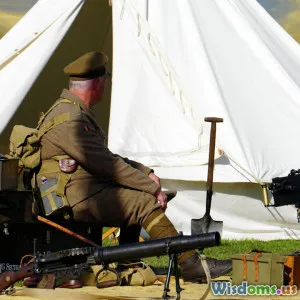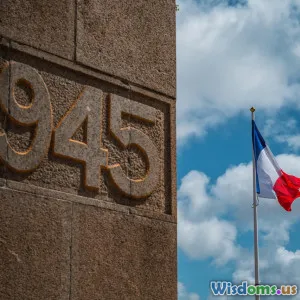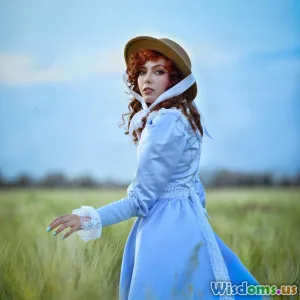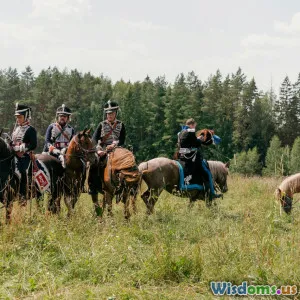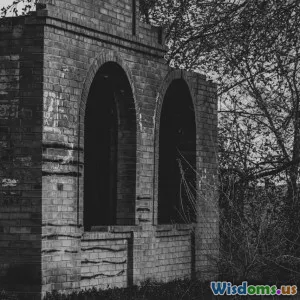
The Hidden History of Secret Societies
9 min read Explore the intriguing hidden history of secret societies that shaped politics, culture, and power throughout the ages. (0 Reviews)
The Hidden History of Secret Societies
Secret societies have fascinated humankind for millennia, weaving an intricate tapestry of mystery, power, and hidden influence across civilizations. While popular media often portrays them as mystical or conspiratorial, the true history of these clandestine organizations reveals deep connections to social structures, political power, and cultural development.
This article embarks on a journey through time, uncovering the origins, evolution, and enduring legacies of secret societies. Through well-documented examples and critical insights, we aim to illuminate how these enigmatic groups shaped the course of history and continue to influence the modern world.
Origins and Early Examples
Secret societies are not a modern invention; their roots stretch back to ancient times where secrecy often equated to survival, power, or religious sanctity. One of the earliest known is the Eleusinian Mysteries in ancient Greece, which preserved sacred knowledge through secretive initiation rites. These societies were not merely clandestine by design but served as hubs for spiritual and intellectual enlightenment inaccessible to the uninitiated.
Similarly, the Pythagorean Brotherhood, around the 6th century BCE, functioned as a secretive philosophical and religious group in Magna Graecia. It is notable for establishing early concepts in mathematics, philosophy, and science, embedding secret knowledge within initiation and loyalty oaths.
In ancient Egypt, priesthoods also operated quietly with Esoteric wisdom related to healing, astrology, and mysticism, emphasizing how secrecy often shielded specialized knowledge from the broader society.
The Middle Ages: Political and Religious Influence
The rise of strong centralized powers and religious institutions during the medieval period gave secret societies new roles, often entwined with political intrigue and theological debates. The Knights Templar, founded in the early 12th century, exemplifies this intertwining. Initially a military order protecting Christian pilgrims, they accrued massive wealth and influence, which later fueled myths around secret rituals and hidden treasure.
The Templars’ sudden suppression under King Philip IV of France in 1307 is historically documented but left fertile ground for conspiracy theories concerning their secrets and survival.
Another notable group was the Rosicrucians, a mystical order emerging in the early 17th century, who claimed access to ancient wisdom blending science, alchemy, and spiritual insight. Their anonymous manifestos circulated widely, influencing thinkers like Francis Bacon and Isaac Newton, implying that secret knowledge played a pivotal role in the Scientific Revolution.
The Enlightenment and Secret Societies
In the 18th century, secret societies expanded their influence amidst the transformative social climate of the Enlightenment and revolutions.
The Freemasons deserve special attention for their global impact. With roots in medieval stonemasons’ guilds, their evolution fostered a fraternity emphasizing liberty, equality, and fraternity. Notable members included George Washington, Wolfgang Amadeus Mozart, and Benjamin Franklin. Their lodges provided spaces for progressive ideas, which some scholars argue contributed to democratic revolutions in America and France.
However, the Masons were also mistrusted by authoritarian regimes and the Church, who feared their secrecy could undermine traditional hierarchies. Pope Clement XII’s 1738 papal bull In Eminenti explicitly condemned them, marking the long-standing tension between secret societies and institutional power.
19th and 20th Century: Revolutionary Movements and Modern Conspiracies
The 19th and 20th centuries broadened the variety and objectives of secret societies, often aligning with nationalist movements or political agendas.
The Carbonari in Italy were a revolutionary secret society that contributed significantly to the unification of Italy. Their clandestine methods and radical ideology inspired uprisings that dismantled the old monarchies.
Similarly, the Skull and Bones society at Yale University, established in 1832, illustrates how secretive fraternities transitioned into elite social networks influencing political power. With alleged members such as presidents George H. W. Bush and George W. Bush, their influence sparked modern suspicions about backdoor politics.
Modern conspiracy theories also orbit around these groups – from Illuminati myths alleging world domination plots to more secular accounts illustrating networking, mutual support, and influence-peddling.
The Functions and Psychology of Secrecy
Why do secret societies persist? According to sociological research, secrecy serves both practical and psychological functions:
- Social cohesion: Secrecy creates strong bonds between members, ensuring loyalty and trust.
- Power preservation: With information controlled, members gain exclusive access to resources or influence.
- Identity and belonging: Rituals and secrecy satisfy a human desire for belonging to something exclusive.
Anthropologist Victor Turner emphasized the role of rites of passage and initiations in creating liminal spaces where individuals transform socially and psychologically within such societies.
Legacy and Modern-Day Impact
While many secret societies have dissolved or adapted into open organizations, their legacies endure. Freemasonry remains active globally, with millions of members engaging in philanthropy and networking. Their symbolism pervades architectural landmarks, government buildings, and corporate emblems, often unnoticed by the general public but hinting at historical continuity.
In business and politics, modern informal networks reflecting secret society principles continue to operate—think of private clubs or elite summits.
Importantly, understanding these groups historically demystifies their role: rather than omnipotent puppet masters, they are complex social actors whose secrecy both protects and conceals.
Conclusion
The hidden history of secret societies reveals an ongoing human fascination with knowledge, power, and exclusivity. These societies shaped intellectual movements, fueled revolutions, and influenced modern governance and culture. Rather than mere fodder for conspiracy theories, studying their true roles offers a lens into how groups affect societal change while navigating secrecy and openness.
Whether through ancient mysteries, Masonic lodges, or elite fraternities, secret societies remain a testament to humanity’s quest for identity, influence, and belonging—a quest that challenges us to consider the balance between transparency and confidentiality in our own lives and institutions.
References & Further Reading
- Ridley, Jasper. The Freemasons: A History of the World's Most Powerful Secret Society. 2011.
- Chevallier, Jacques. The Secrets of the Templars. 1972.
- Turner, Victor. The Ritual Process: Structure and Anti-Structure. 1969.
- Robison, Abbot. Proofs of a Conspiracy. 1798.
- Knights Templar Historical Foundation: www.templarhistory.com
- Merriam-Webster’s Dictionary of Secret Societies
Unlock the mysteries of hidden history; recognize the influence secret societies cast on our collective heritage and the very fabric of modern civilization.
Rate the Post
User Reviews
Popular Posts


















